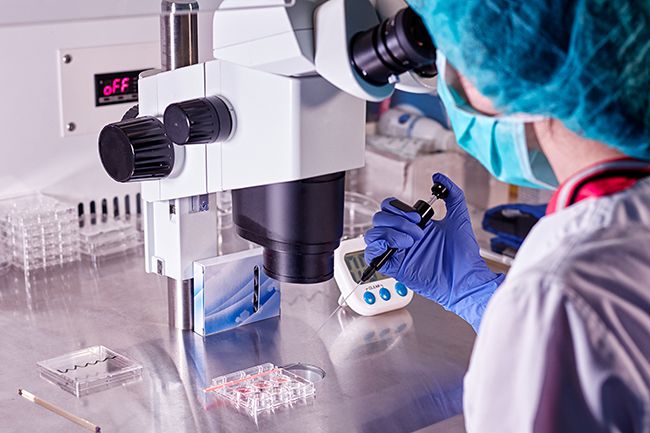In January this year, BBC Woman's Hour presenter Emma Barnett welcomed her second child after multiple rounds of IVF following secondary infertility.
Emma shared the wonderful news with her Instagram followers, writing: "She’s here. Last week we welcomed a daughter to the world. The embryo that took. The one that stayed. The shell that finally opened."
So what exactly is secondary infertility? Read on to find out…
Cynthia Hudson, VP Clinical Strategy & Specimen Services at TMRW Life Sciences, explained all to HELLO!...
What is secondary infertility and how common is it?
The definition of secondary infertility for a couple is the inability to conceive or carry a baby to term after the female partner has previously given birth.
Secondary infertility refers to when someone has had one or more pregnancies in the past, but is having difficulty conceiving again. It is thought to affect one in 20 couples, however many people are unaware of what secondary infertility is, and what can cause it.
In primary infertility, pregnancy has never been achieved naturally in the first place. Primary infertility affects roughly fifteen per cent of the population; secondary infertility affects a lower percentage, but statistics vary widely.
What can cause secondary infertility?
A woman may develop secondary infertility for any number of reasons, but age is a common one.
Fertility declines as women (and men) age, which may explain why some women struggle to conceive naturally again if they are 35 years or older. Similarly, as men age, the quality and quantity of their sperm decreases, negatively impacting their fertility.
Other causes of secondary infertility include: having damaged fallopian tubes from a previous pregnancy, if a woman has a medical condition that affects fertility (such as endometriosis or polycystic ovary syndrome), the development of uterine fibroids - in addition to the impact of trauma, infection or other medical conditions for either the man or the woman.
Lifestyle factors also contribute to secondary infertility and would include either partner gaining an excessive amount of weight. Conversely, significant weight loss can also have a negative impact on a woman's fertility – for example, if weight loss leads to amenorrhea (the absence of menstruation). Alongside this, extensive alcohol usage and smoking are also potential causes of secondary infertility.
Can both men and women experience secondary infertility?
Secondary infertility can happen to both men and women. It is said that one third of instances originate in women and about one third originate in men, with the remaining third caused by a combination of factors or is unknown.
How is secondary infertility diagnosed and when should you seek medical advice?
Secondary infertility is identified when a couple has attempted to conceive for a year (if the woman is under 35, and 6 months if over 35) while having regular unprotected sex, and they have been unsuccessful.
Also, the previous birth must have occurred naturally without help from fertility treatments or medications.
What treatments are there for secondary infertility?
If a couple is experiencing secondary infertility, the treatments are the same as those experiencing primary infertility.
Treatments and interventions range widely; simple ones involve using fertility medication to control or promote ovulation. This treatment is sometimes combined with timed intercourse or intrauterine insemination (IUI), which involves surgically inserting sperm into a woman's uterus at the correct time to boost the likelihood of pregnancy.
Couples can also turn to more involved treatments such as IVF (in vitro fertilisation), which involves the removal of a female's eggs, fertilisation of those eggs using sperm to create embryo(s) in a laboratory, and then the transfer of a resulting embryo to the female's womb.
To avoid potential reproductive concerns later in life, and because age is a big reason some people struggle to conceive, women (and men) may choose to freeze their eggs (or sperm).
Frozen eggs, sperm and embryos may be stored for up to 55 years allowing people to begin these fertility preservation attempts at any age to try to boost their chances of being able to have the number of children they want when they are older.
Like this story? Sign up to the HELLO! Family Hub newsletter to get other stories like this delivered straight to your inbox.











